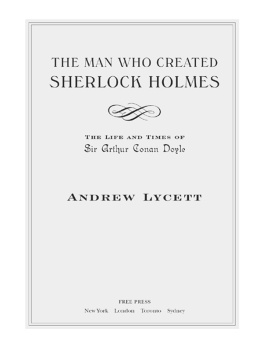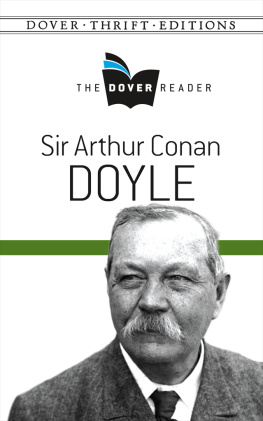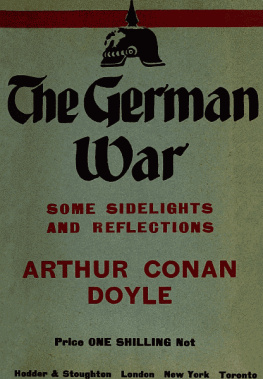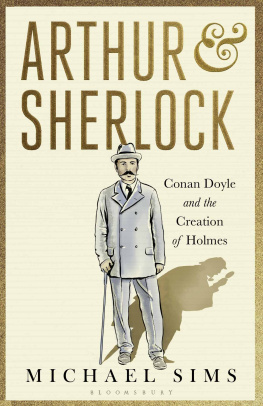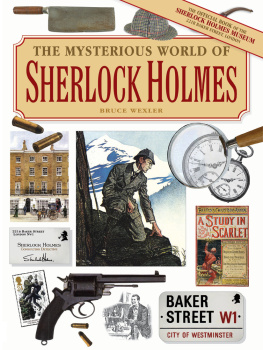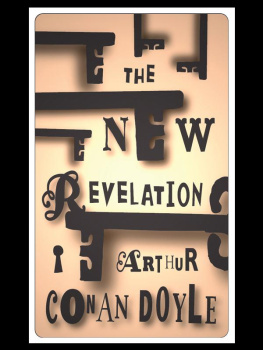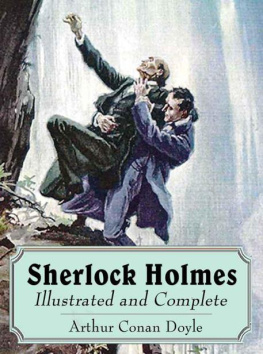B Y THE SAME AUTHOR
Qaddafi and the Libyan Revolution (with David Blundy)
Ian Fleming
Rudyard Kipling
Dylan Thomas

Copyright 2007 by Andrew Lycett
Originally published in Great Britain in 2007 by Weidenfeld & Nicolson
All rights reserved, including the right to reproduce this book or portions there of in any form whatsoever. For information address Free Press Subsidiary Rights Department, 1230 Avenue of the Americas, New York, NY 10020.
FREE PRESS and colophon are registered trademarks of Simon & Schuster, Inc.
Library of Congress Cataloging-in-Publication Data
Lycett, Andrew.
[Conan Doyle]
The man who created Sherlock Holmes: the life and times of Sir Arthur Conan Doyle /
Andrew Lycett.
p. cm.
Originally published: Conan Doyle, the man who created Sherlock Holmes.
London: Weidenfeld & Nicolson, 2007.
Includes bibliographical references and index.
1. Doyle, Arthur Conan, Sir, 18591930. 2. Authors, Scottish19th century
Biography. 3. Authors, Scottish20th centuryBiography. I. Title.
PR4623.L93 2007
823.8dc22 2007034816
[B]
ISBN-13: 978-1-4165-4580-4
ISBN-10: 1-4165-4580-8
Visit us on the World Wide Web:
http://www.SimonSays.com
For Suealways the woman
Contents
PART ONE
Taking In
5 On the RoadIreland, West Africa and Plymouth
18811882
PART TWO
Cargo Stored
16 The Hound of the Baskervilles to Louises Death
19011906
PART THREE
Giving Out
List of Illustrations
Arthur age two with sister Annette1
Arthur age four1
Arthur with his father2
Mary Doyle, Arthurs mother, c . 18671
James Doyle2
Henry Doyle2
Dicky Doyle2
Michael and Susan Conan1
Arthurs sisters: Connie, Lottie and Annette in Lisbon
Ida Foley (ne Doyle)1
Dodo Angell (ne Bryan Mary Josephine Doyle)1
Arthurs poetry class at Stonyhurst 18734
Whaling on the SS Hope 1
Professor Joseph Bell1
George Budd
Arthur outside Bush Villas in Portsmouth c. 1880s1
Arthur and Innes in Portsmouth 18901
Outside the re-named Doyle House, 19111
Louise before marriage2
Louise, her mother and her two children, Mary and Kingsley, at Tennison Road1
Family group 18942
Mary Doyle 18911
Arthur in the snow 18943
Jean Leckie 19073
Lily Loder-Symonds1
Wedding of Jean and Arthur, September 1907, with Lily Loder-Symonds, Lesley Rose, Innes Doyle, Branford Angell1
Arthur and Jean at the Acropolis, on honeymoon 19071
Arthur and Jean at the pyramids1
At the seaside with baby Denis c. September 19103
Undershaw2
Windlesham2
Arthur at the French front June 19161
Kingsley 19162
Innes in uniform2
Arthur playing deck cricket on the Durham Castle , September 19091
Playing tennis with Malcolm Leckie1
Competing in the Amateur Billiards championship 19131
Arthur with his Autowheel, and F. G. Guggisberg1
Arthur with Douglas Fairbanks in Hollywood 19231
Arthur with spirit manifestation2
Arthur with daughter Mary and two employees inside the Psychic Bookshop2
The family at Bignell Wood1
Mary Doyle and her daughter Connie1
With his wife and childen at Waterloo Station departing for the United States 19233
A picnic at Jasper Park in Alberta, Canada3
PERMISSIONS
1The Arthur Conan Doyle Collection Lancelyn Green Bequest, Portsmouth City Council, All rights reserved
2Georgina Doyle
3Toronto Public Library
4Stonyhurst


The ideal biographer should be a perfectly impartial man, with a sympathetic mind, but a stern determination to tell the absolute truth. One would like the frail, human side of a man as well as the other. I cannot believe that anyone in the world was ever quite so good as the subject of most of our biographies. Surely these worthy people swore a little sometimes, or had a keen eye for a pretty face, or opened the second bottle when they would have done better to stop at the first, or did something to make us feel that they were men and brothers. They need not go the length of the lady who began a biography of her deceased husband with the words Dwas a dirty man, but the books certainly would be more readable, and the subjects more lovable too, if we had greater light and shade in the picture.
Through the Magic Door
Has anything escaped me? I trust that there is nothing of consequence which I have overlooked?
The Hound of the Baskervilles
Molten lava and packed ice: even the natural forces that created Edinburghs jagged landscape came in contrasting pairs. More than 300 million years ago one of the smouldering volcanoes that dotted the surrounding countryside erupted, making a series of crags, the tallest of which, serendipitously known as Arthurs Seat, now towers over the city. Later, vast glaciers ground their way through the lava-rich earth, shaping these contours and forming deep basins where today railways run instead of dinosaurs.
This was the ribbon of soaring pinnacles and perpendicular drops that Robert Louis Stevenson fondly recalled as his precipitous city. For the full vertiginous effect, he probably also envisaged the steepling, overcrowded tenements or lands that spread upwards over what little space the cramped crag and tail topographical features permitted, so creating the high-rise skyline of Edinburghs Old Town.
At ground level, a network of alleys or wynds led off the main Royal Mile. By the mid-eighteenth century, the stench, squalor and sheer numbers had become so insufferable that the professional classes leading the pragmatic intellectual movement known as the Scottish Enlightenment wanted somewhere more salubrious to live. After deciding on a solid sandstone ridge a mile away, they drained and bridged NorLoch, the inland lake that lay between, and hired a young architect, James Craig, to design a well ordered New Town, full of classical terraces and leafy squares.
As with the Old and New Town, so with Edinburgh in general. It is a city of dramatic contrasts, made tolerable by thoughtful accommodation. Here the ferocity of the outlying Highlands and Lowlands was blunted by the civilizing achievements of the Athens of the North. Here a Scottish fascination with witchcraft and the supernatural came under the skeptical gaze of scholars such as David Hume who congregated at the university. With his home city in mind, Stevenson wrote his classic fictional portrayal of schizophrenia, The Strange Case of Dr. Jekyll and Mr. Hyde , drawing on Edinburghs real-life Deacon Brodierespectable shopkeeper by day, infamous body the if by night. The only thing that remained constant was the bitter cold.
Arthur Conan Doyle was born at a slight tangent to this polarized world in Picardy Place, a quiet enclave off the main road out of town to Leith. Taking its name from the colony of linen-weavers who came there from France in 1729 to start a local industry, it played host to newer arrivals such as Arthurs parents, whose families hailed from Ireland and who enjoyed the security of living across the way from their co-religionists in the Roman Catholic church of St. Marys.

